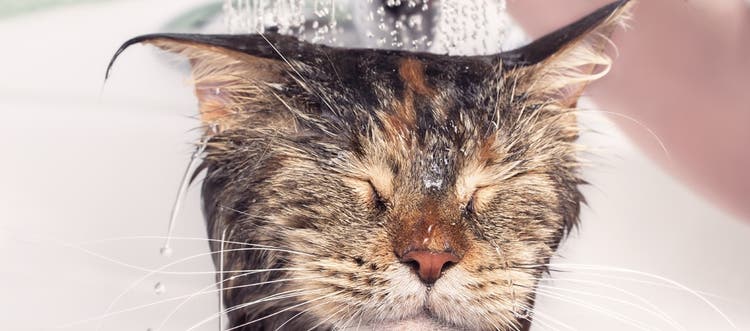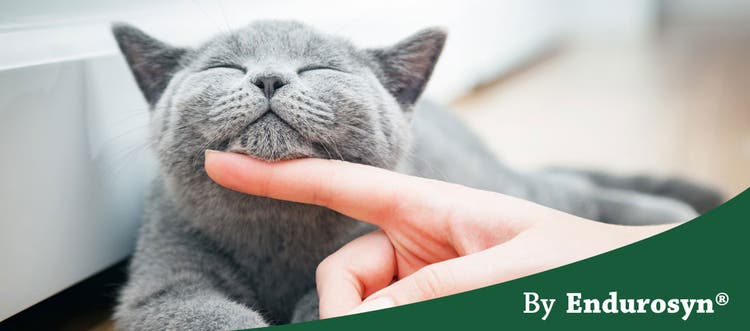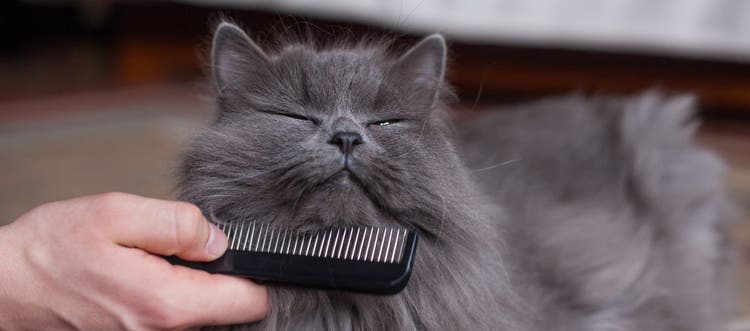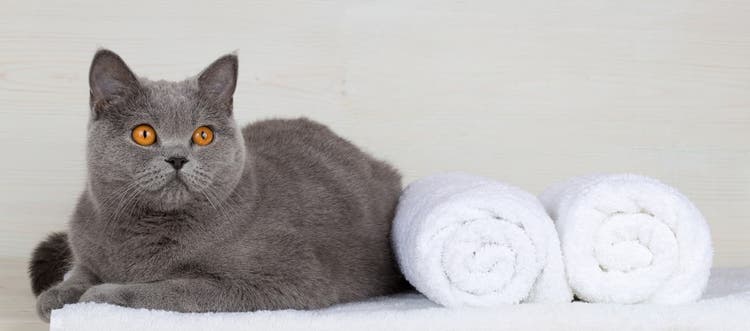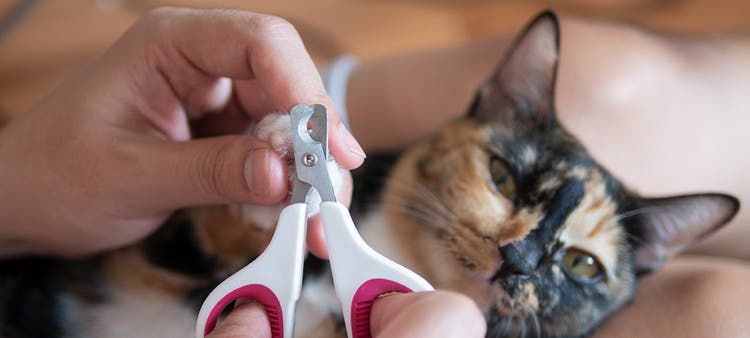What causes hairballs in cats and how to reduce them.
Cats are well-known for their meticulous grooming routines, and they can spend hours happily cleaning themselves. But this habit can come with a downfall: cat hairballs.
Hairballs (also known as trichobezoars) are clumps of undigested fur moistened by digestive fluids. If your cat gags up hairballs more than once or twice a month, this can signal an underlying health concern. Like any other pet health issue, understanding hairballs in cats will help you manage them.
What Causes Hairballs in Cats?
Hairballs are a result of the following process:
- When cats clean themselves, they grab fur with their tongue — which has tiny hook-like structures called papillae — and ingest it.
- Much of the fur goes through the digestive tract. Cats’ digestive systems are designed to let hair pass through normally. However, if the cat is over-grooming or has a digestive tract issue, hair can accumulate in the stomach and eventually become a hairball.
- The cat then regurgitates the hairball. Usually a hairball is slender and cylindrical (at first glance, it can look like feces), because the cat coughs it up through the esophagus. Owners may also see hair in their cat’s vomit.
Six Remedies to Reduce the Amount of Hairballs Cats Develop
- Brush your cat daily to remove loose hair, which not only helps prevent hairballs, but also reduces the amount of shedding on furniture (or your favorite pair of black pants).
- For cats willing to take a water bath, use products such as shampoo to hydrate the skin and coat, which may help control excess shedding. If your cat is water-averse, try wet wipes to remove excess hair.
- Consider feeding your cat special food that contains added fiber, which helps hair move through your cat’s digestive system.
- Encourage hydration in your cat by providing plenty of fresh water and adding moist food to your cat’s diet.
- Consider hairball laxatives that lubricate your cat’s stools and swallowed fur, so they’re easier to pass.
- Distract your cat from over-grooming by increasing your playtime sessions and offering more toys and enrichment opportunities.
How Often Do Hairballs Occur?
In general, it’s normal for a cat to regurgitate hairballs every week or two. Unsurprisingly, long-haired breeds tend to get hairballs more often because they have more hair. Those breeds include, but are not limited to, Persians, Maine coons, ragdolls, Himalayans and Siberians. However, just because long-haired breeds get hairballs more often than short-haired cats, frequent hairballs are not normal for cats regardless of the breed.
Are Hairballs Dangerous to Cats?
If your cat coughs up an occasional hairball but otherwise seems healthy, the hairball is probably not cause for concern. However, regular hairballs, especially coupled with vomiting, warrant a trip to the vet. If your cat is gagging but not producing a hairball, they could be suffering from a blockage in the intestinal tract. Look for these symptoms:
- Vomiting, gagging, retching or hacking without producing a hairball
- Lack of appetite
- Weight loss
- Lethargy
- Constipation or diarrhea
- Distended belly
If you notice any of these problems, bring your pet to the veterinarian, as they can help your cat cough up the hairball. Your vet may perform diagnostics such as X-rays to see if your cat’s intestinal tract is blocked and in need of surgery or other therapies.
The occasional cat hairball probably isn’t cause for worry, but frequent hairballs may point to an underlying medical condition. And while regularly grooming your cat and feeding them a healthy, high-fiber diet can help minimize your cat’s struggles with hairballs, if your cat has a chronic issue, schedule a visit to the vet to investigate.

Endurosyn® Digestive Health Probiotic Oral Gel for Cats
A three-day probiotic oral gel to promote intestinal well-being during sudden times of stress in cats.
